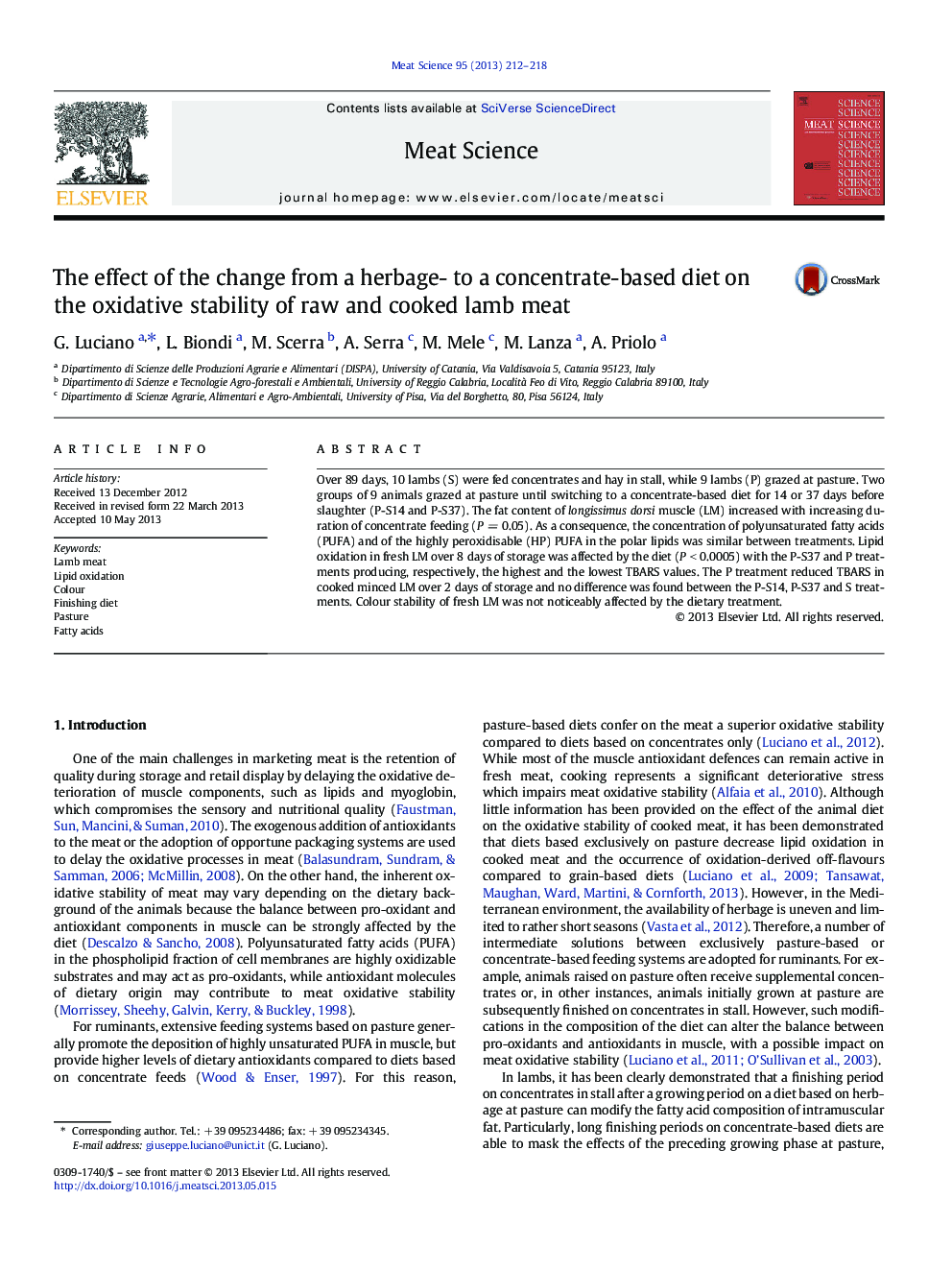| کد مقاله | کد نشریه | سال انتشار | مقاله انگلیسی | نسخه تمام متن |
|---|---|---|---|---|
| 5791679 | 1109619 | 2013 | 7 صفحه PDF | دانلود رایگان |
- Finishing pasture-raised lambs on concentrates increased meat lipid oxidation.
- The diet did not affect the concentration of pro-oxidant fatty acids in muscle.
- Finishing lambs on concentrates could impair the antioxidant capacity of muscle.
- Meat colour was stable over storage and was slightly affected by the diet.
Over 89Â days, 10 lambs (S) were fed concentrates and hay in stall, while 9 lambs (P) grazed at pasture. Two groups of 9 animals grazed at pasture until switching to a concentrate-based diet for 14 or 37 days before slaughter (P-S14 and P-S37). The fat content of longissimus dorsi muscle (LM) increased with increasing duration of concentrate feeding (PÂ =Â 0.05). As a consequence, the concentration of polyunsaturated fatty acids (PUFA) and of the highly peroxidisable (HP) PUFA in the polar lipids was similar between treatments. Lipid oxidation in fresh LM over 8Â days of storage was affected by the diet (PÂ <Â 0.0005) with the P-S37 and P treatments producing, respectively, the highest and the lowest TBARS values. The P treatment reduced TBARS in cooked minced LM over 2Â days of storage and no difference was found between the P-S14, P-S37 and S treatments. Colour stability of fresh LM was not noticeably affected by the dietary treatment.
Journal: Meat Science - Volume 95, Issue 2, October 2013, Pages 212-218
